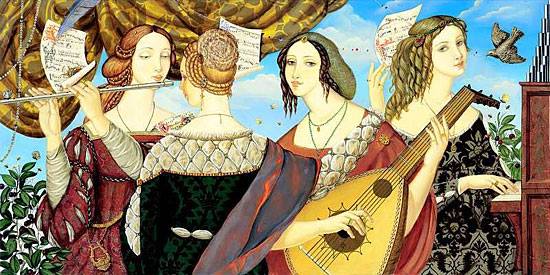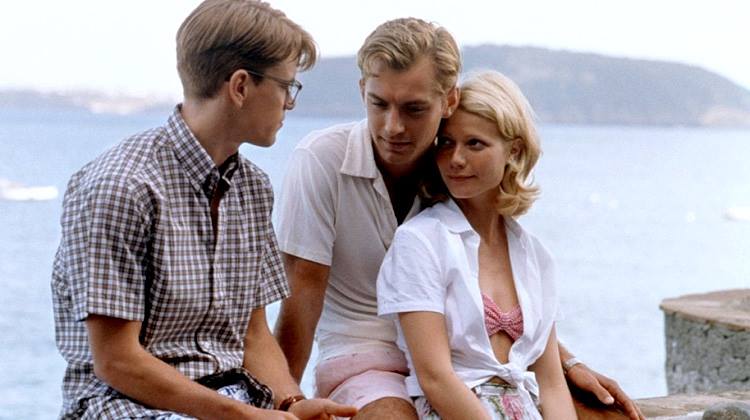W hen I was applying for my undergraduate degree at McGill University, I was rejected three times from the composition program. I had been accepted in my first year as a general music major, and had hoped that after taking a year of private lessons with a graduate student, I would be admitted on my second attempt. But this was not the case. Upon my second refusal, I sought permission to take the first year orchestration and composition classes, regardless of the fact that I wasn’t officially in the program. The professors explained to me time and time again how challenging the courses were, and how doubtful they were that I could handle them. I repeatedly told them otherwise until finally, I was granted permission.
When I sat down to my first class, I looked around the room and saw that I was the only woman amidst six men. After my third or fourth class, I realized that while my knowledge of orchestration was perhaps a bit behind that of some of my peers, I was by no means drastically inferior to any of them. I watched for the next three years the looks of mild astonishment that would cross the faces of my professors, all of whom were also men, as they passed back assignments for which I had received an A.
When I was finally admitted into the program after my third application, I learned that not only was I the only female composition student in my year, but that in the entire composition program, a class of roughly 100 undergraduate and graduate students, I was one of only seven women. On the composition faculty, there was a single woman. Though I had to apply three times before being admitted to the program, I managed to graduate in the same year as my male counterparts, all of whom had been admitted three years prior to me, and to graduate at the top of my class. In all this it was hard to escape the feeling that as a female composer, I would have to work twice as hard as my male counterparts if I wanted to succeed.
When I decided to venture into the world of film composition, I thought that the numbers might even out a bit, but once again I was mistaken. Although the parity within my film scoring Master’s at the Berklee College of Music was an improvement from McGill—6 women out of 27 students—I came to discover that the number of women in creative roles within the film industry is astoundingly low.
According to The Celluloid Ceiling, the longest-running and most comprehensive study of women in film, women have accounted for only 16-19% of behind-the-scenes roles in the top 250 grossing films since 1998. Only a jaw-dropping 1-3% of the composers for these films have been women. These numbers go up slightly when we look at independent films, but are still nowhere near parity with men. According to Independent Women, the most comprehensive study of female employment on independent films, women hold only 24-29% of the behind-the-scenes roles of the films that make it to high-profile festivals in the U.S., and only 9-10% of the composers are women. Whatever the case, female numbers never exceed 30%, and composers and cinematographers continuously bring in the lowest percentages, never surpassing 10%.
In 2017, within Canada specifically, on average 16% of film, television and web series directors have been women; 5% of cinematographers have been women; and 29% of writers have been women. With regards to composers, the Screen Composers Guild of Canada compiled data from SOCAN, which showed that in 2015, 6.3% of audio-visual composers were women, and that these women earned 17% of what the men did. Similar numbers exist in almost every other country for which we have statistics. In Europe, for instance, female directors receive 40% less salary and 23% less project funding than their male counterparts.
This gaping disparity within the film industry exists despite the fact that women and men generally attend film school in equal numbers. That women remain substantially less successful in the film industry is referred to as the “funnel of attribution,” or “leaking pipe syndrome,” wherein biases hinder the progression of their careers. As Finnish composer Kaija Saariaho said in a speech she gave at McGill University when she received an honorary doctorate in 2013: “Nobody wants to be evaluated for things other than their actual skills. But I would like us all to realize (or, to be reminded) that the situations in which we make the evaluations are never objective and that our judgments, however rational they seem to us, can always be colored by our biases.”
One of the strongest biases still facing female composers today is the idea of the existence of “the female music aesthetic.” In an article in The Telegraph, Ivan Hewett postulates that this particular stereotype is one of the contributing factors to there being a lack of female composers featured in concerts around the world, such as the BBC Proms. He points out that in the past, adhering to this aesthetic was the only way women could have their pieces heard publicly in salons, Clara Schumann being perhaps the most obvious example. Today though, female expression in music has widened to the point where it should no longer be associated with such constructs. Hewett lists composers such as Ruth Crawford Seeger, Elizabeth Lutyens, and Shiva Feshareki as attesting to this. It is easy to listen to a piece of music and call it “masculine” or “feminine,” but at the end of the day, a man is just as capable of writing a “feminine” piece as a woman is capable of composing a “masculine” work. Judgment should be purely based on musical merit. Whereas Ivan Hewett offered that one might interpret Kaija Saariaho’s work as maintaining a certain “soft” and “feminine” quality, The Guardian reviewed her work in a much more articulate and subjective manner: “…very few have dared to dream sonic images of such magnetic power…. To journey into Saariaho’s music is to be confronted with the darkest and most dazzling dimensions of your subconscious, and glimpses of the existential journeys she has made to find these pieces.” This is how a piece of music should be reviewed. In 2016, the Metropolitan Opera staged Saariaho’s acclaimed work, L’Amour de Loin. It was the first time an opera by a woman had been performed at the MET in over a century.
This automatic association of female creative output with a feminine aesthetic has not only affected women in the classical music world; it has also impeded women in the film scoring industry from getting access to genres that are generally associated with masculinity. The Celluloid Ceiling’s yearly report consistently finds that of all the genres, women are most likely to contribute to drama and comedy, and are least likely to work on animation, sci-fi, and horror. I, personally, have encountered this stereotype on several occasions. I have been asked what genre I prefer to score and have had “romantic comedy” suggested before being given the chance to respond. In graduate school, when I and several other composers were being matched with various game developers to work on different video games, I immediately fell in love with a Western but was assigned instead to a light, rainbow colored one. Not that it had any less merit than the Western, though when I asked why I was assigned to it when there were several other composers, including men, who wanted to score it more than I did, I was told that my music had a “feminine” quality to it that would suit the game. Here I was, wanting the opportunity to score something that is typically considered unfeminine, and I was being dissuaded from it based on my gender. Luckily, my peers and I agreed to do some swapping, and I was able to score the Western. The score wound up being one of my best.
It seems clear that the gender disparity within the composition and film worlds is not a result of some innate biological tendency, but of the domination of these industries by men and the continuing existence of a deep, engrained societal belief that women are not as capable as men. Thankfully, though, there is hope. In 2014, Sweden announced a groundbreaking gender parity goal, which set a firm target, rather than a quota, for the number of female directors for publicly funded films. In 2016, 50% parity was surpassed with apparently zero impact on quality, demonstrating that the use of a target, rather than the more extreme measure of imposing a quota, could be extremely effective in levying the playing field. Canada followed suit, when in 2015 BravoFACT and BravoFACTUAL announced they would commit 50% of their funds to female-led projects, in perpetuity. In 2016, the percentages of female producers and directors rose to 59% and 49%, respectively. In 2016 the National Film Board of Canada also announced a goal of having 50% of their productions directed by women, and of putting 50% of their funding towards female-led projects. Further still, they set a 2020 goal of achieving gender parity within other key creative roles, including composition, animation, cinematography, editing, and screenwriting. Similarly, Telefilm announced that it would achieve a balanced production portfolio by 2020.
One needs look no further than Wikipedia to grasp just how insignificant female composers have been within the film industry to date. While a quick search for male film composers yields a 200-page-long list of 1,348 names, a search for female film composers brings up only an astonishing 47 names. With numbers like these, how can young aspiring women be expected to dive into a career that is already riddled with uncertainty without a sense of trepidation at their prospects and fear that their gender will count against them? Parity targets within production companies are an important first step in giving women composers a chance to be heard and to prove their worth. One day then, jobs can be awarded based on merit, and not because of a quota or unjustified bias.

